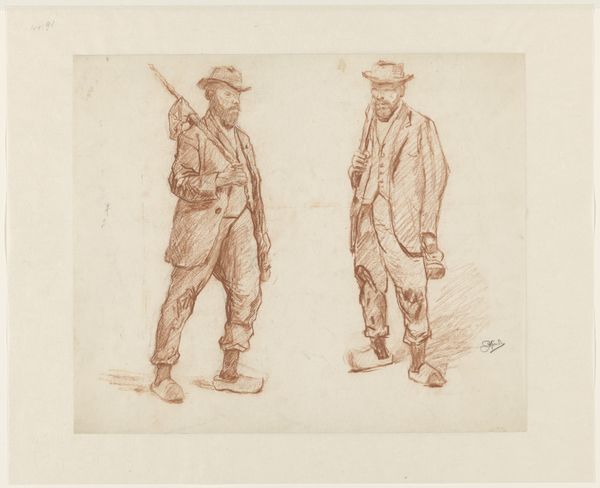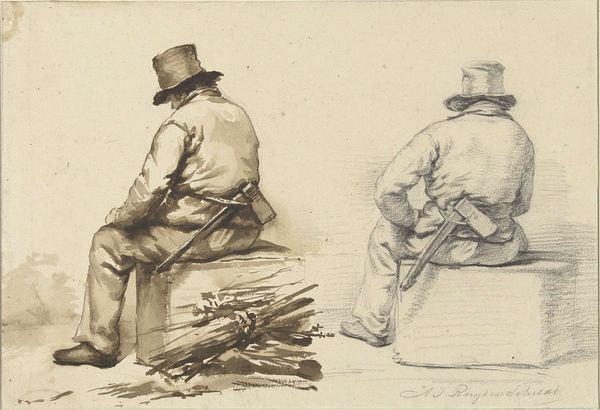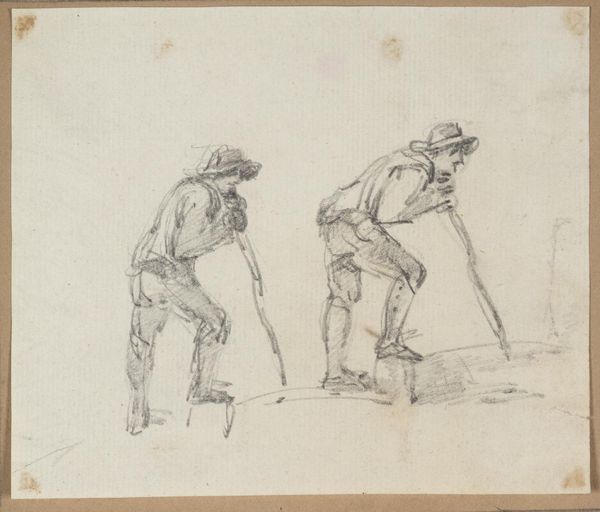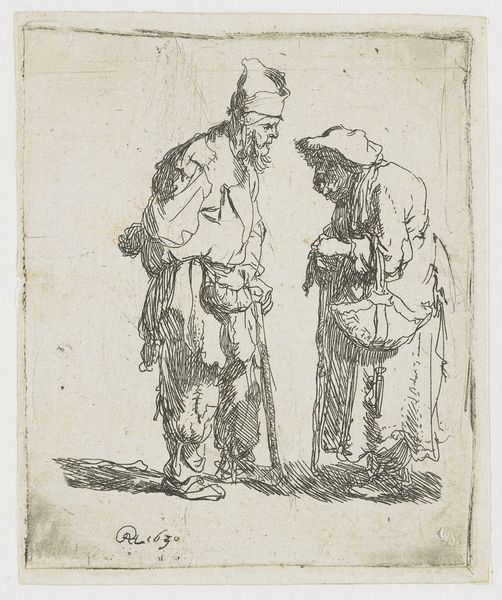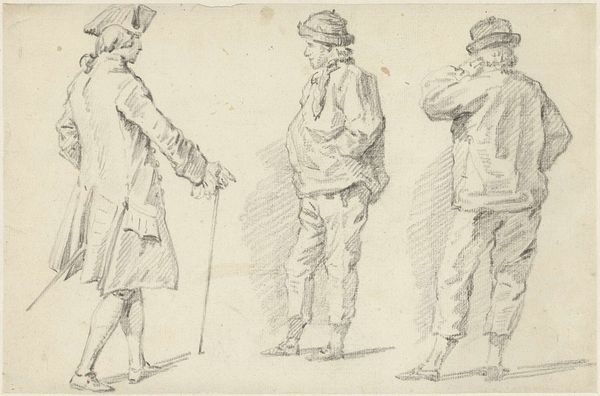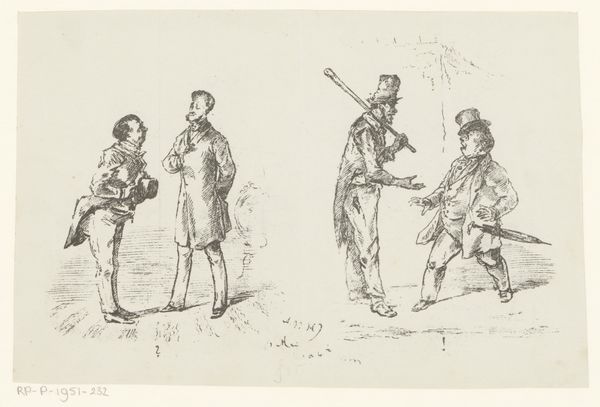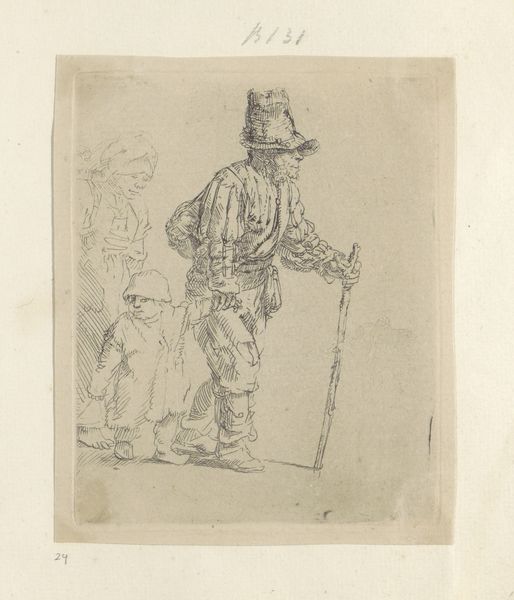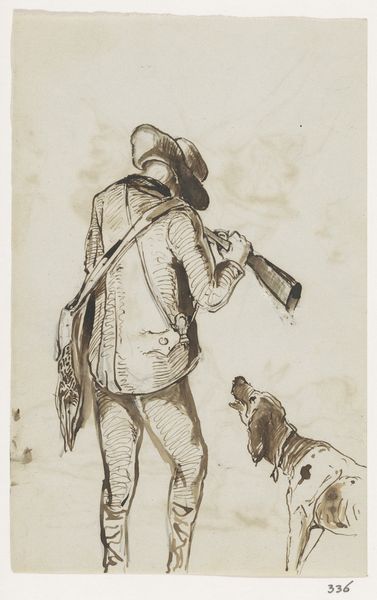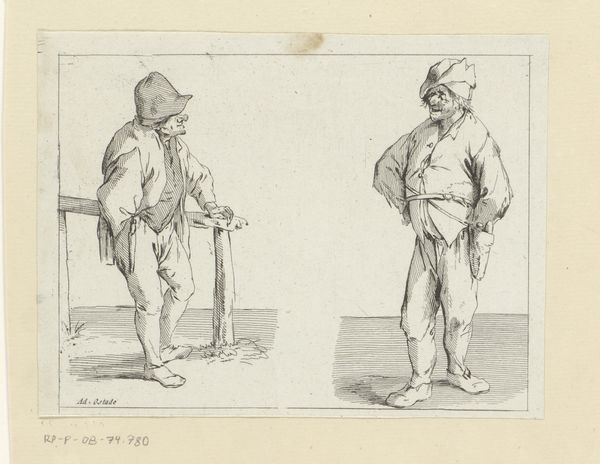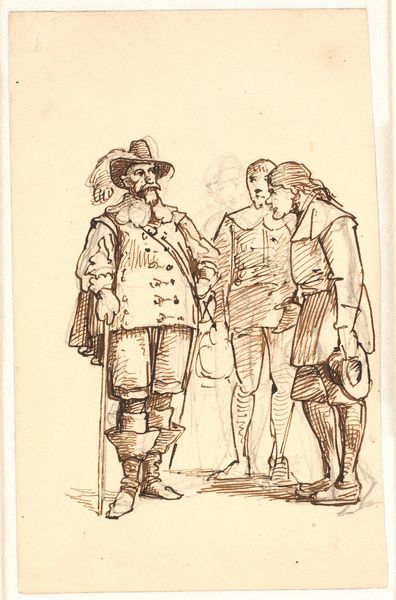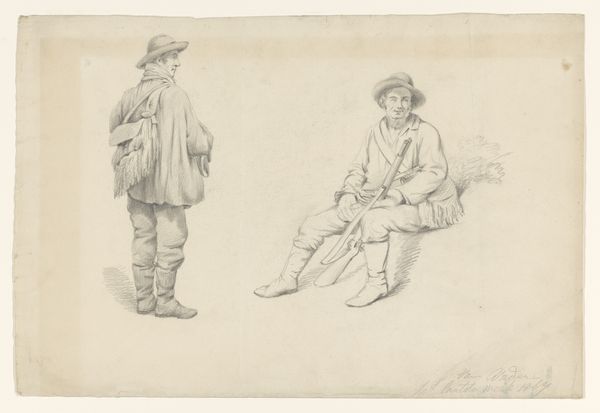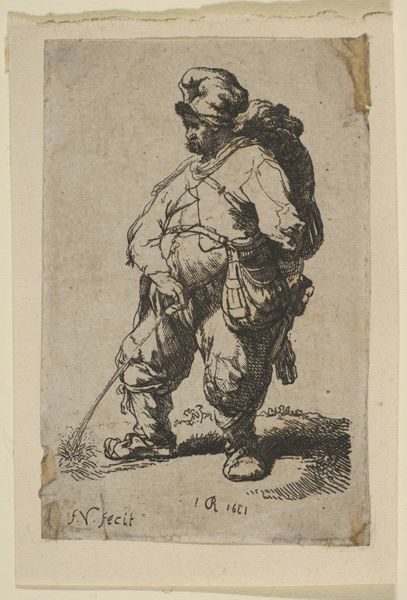
drawing, pencil
#
portrait
#
drawing
#
pencil sketch
#
landscape
#
pencil
#
watercolour illustration
#
genre-painting
#
academic-art
#
watercolor
#
realism
Dimensions: height 256 mm, width 342 mm
Copyright: Rijks Museum: Open Domain
Editor: This is "Twee boeren," or "Two Peasants," a pencil drawing made around 1820 by Anthonie Willem Hendrik Nolthenius de Man. I find the figures so interesting, but the lack of background makes it feel strangely isolated. What do you see in this piece? Curator: This piece speaks to a period grappling with evolving social identities. The peasants, rendered with such stark realism, almost become symbols. Notice the bare feet of one – a potent signifier of their connection to the land, perhaps their very subjugation? And then consider the other, facing away. Do you think this is about social class? Editor: I suppose it could be...The facing figure has more defined clothing, a kind of authority with the walking stick perhaps. Is that the artist's intention or projecting onto the artwork? Curator: Projecting or perceiving? These symbols are never neutral. A walking stick transforms into something more complex – a marker of authority or a tool. Think about similar symbolic objects through art history. Consider how they accrue or lose significance as the social norms around those symbols change. And, who are these individuals? Did this scene actually occur? It would seem as though these are meant to portray realism of the moment, though could also suggest genre-painting, where types of persons have symbolic reference. Editor: That's fascinating. It gives the drawing a whole new dimension, thinking about what each figure represents, more than just people from that time. Thank you for this insightful experience. Curator: Indeed! These humble peasants can, and should be, contemplated beyond their outward appearance; they give a mirror onto society's understanding of itself, then, and perhaps, even, now.
Comments
No comments
Be the first to comment and join the conversation on the ultimate creative platform.
